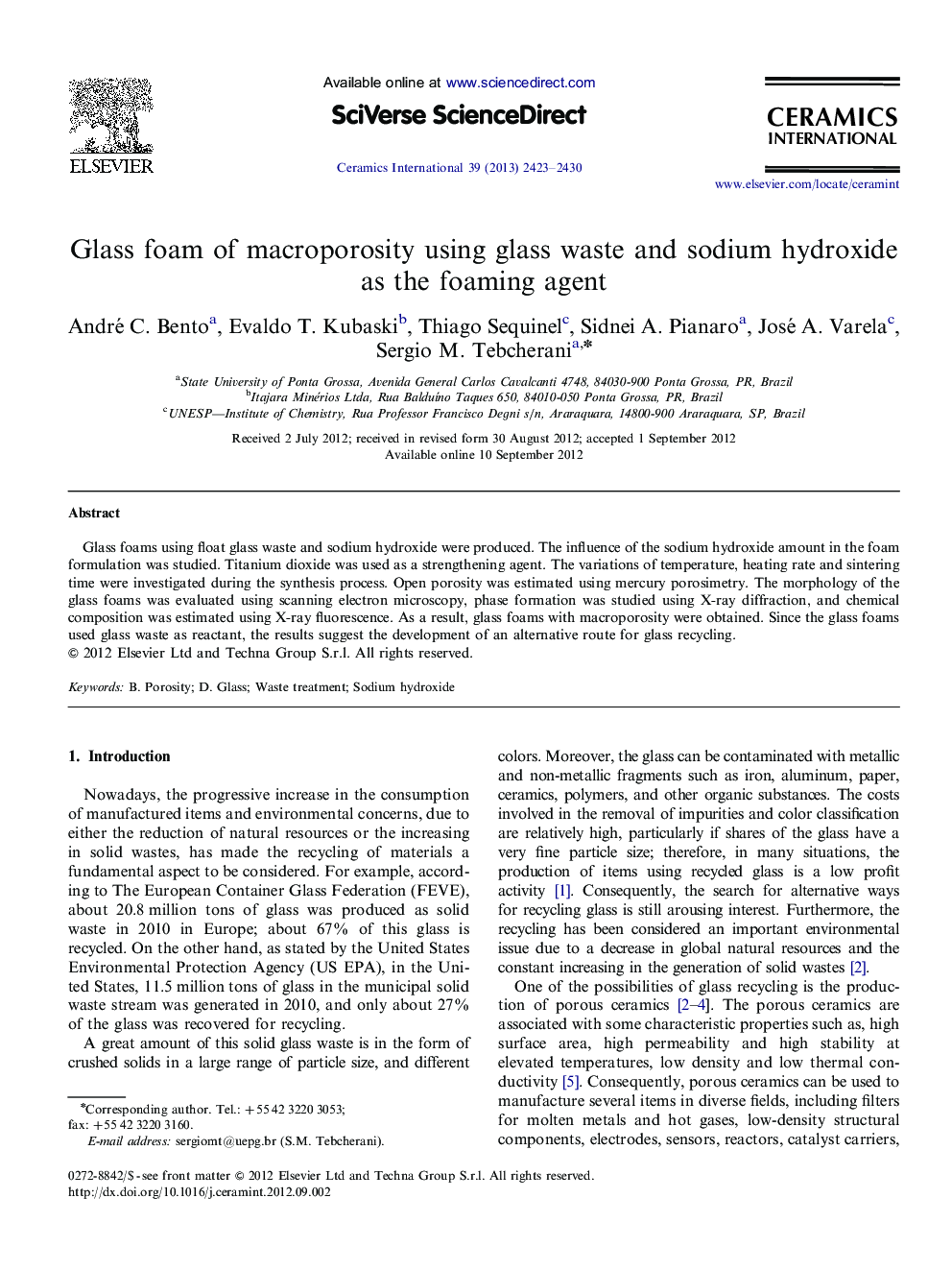| Article ID | Journal | Published Year | Pages | File Type |
|---|---|---|---|---|
| 10626077 | Ceramics International | 2013 | 8 Pages |
Abstract
Glass foams using float glass waste and sodium hydroxide were produced. The influence of the sodium hydroxide amount in the foam formulation was studied. Titanium dioxide was used as a strengthening agent. The variations of temperature, heating rate and sintering time were investigated during the synthesis process. Open porosity was estimated using mercury porosimetry. The morphology of the glass foams was evaluated using scanning electron microscopy, phase formation was studied using X-ray diffraction, and chemical composition was estimated using X-ray fluorescence. As a result, glass foams with macroporosity were obtained. Since the glass foams used glass waste as reactant, the results suggest the development of an alternative route for glass recycling.
Related Topics
Physical Sciences and Engineering
Materials Science
Ceramics and Composites
Authors
André C. Bento, Evaldo T. Kubaski, Thiago Sequinel, Sidnei A. Pianaro, José A. Varela, Sergio M. Tebcherani,
